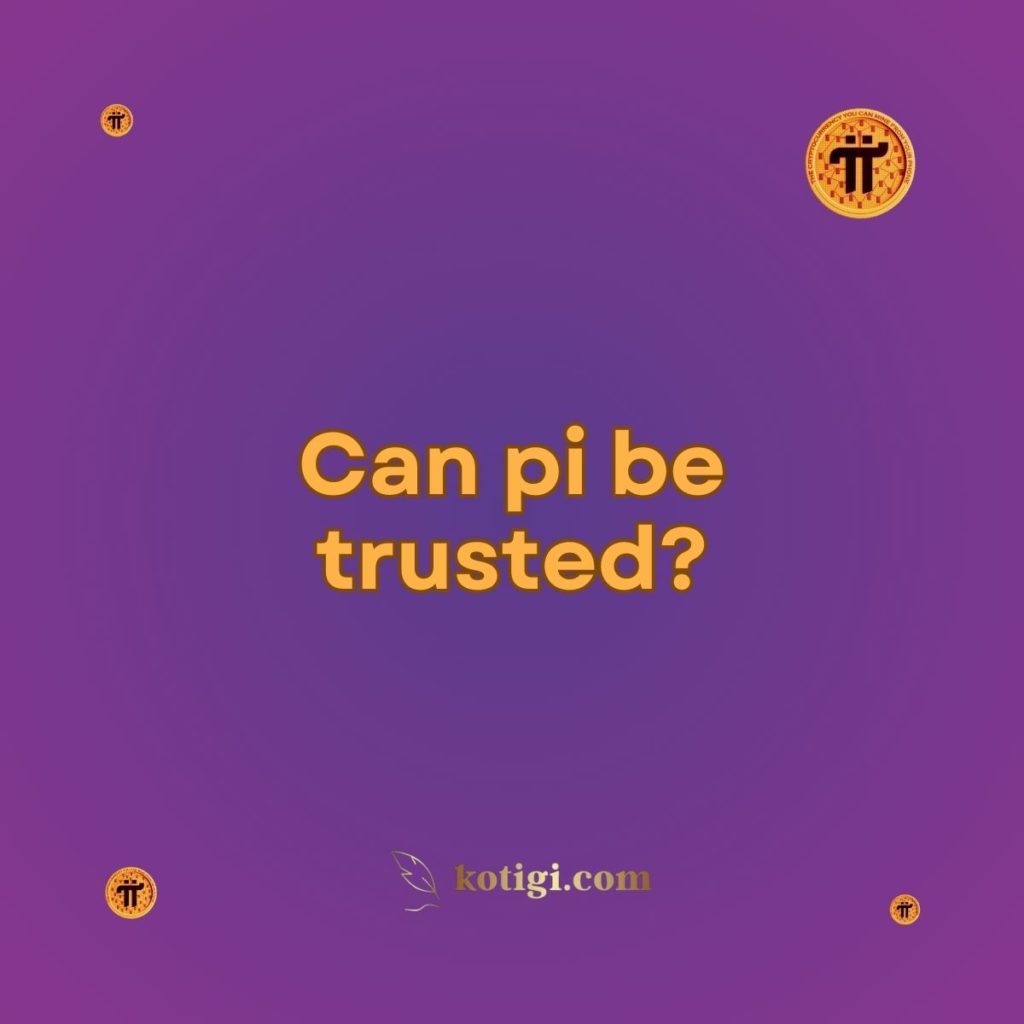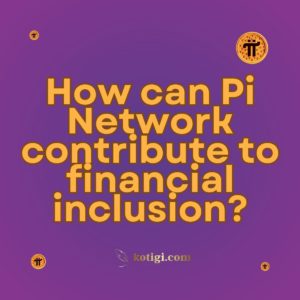
Can pi be trusted?
Pi Network has garnered both excitement and skepticism due to its unique mobile mining approach and its growing user base of over 47 million pioneers. While Pi has shown potential with its focus on decentralization and accessibility, the project is still in its enclosed Mainnet phase, and several aspects, such as its regulatory compliance and long-term viability, remain uncertain. To assess whether Pi can be trusted, it’s essential to look at its development progress, transparency, and community involvement. Read on to explore the critical factors influencing trust in Pi Network.
Introduction
Pi Network is a project that promises to make cryptocurrency mining accessible to everyone through mobile devices, with minimal energy consumption and no need for expensive hardware. As a result, millions of users have flocked to the app, excited about the prospect of earning Pi coins easily. However, with so many cryptocurrency projects in existence—some of which have been scams or failed to deliver—it’s natural to wonder: Can Pi be trusted?
In this article, we will explore the key factors that contribute to the trustworthiness of Pi Network, including its development team, transparency, user base, and potential risks.
Who Is Behind Pi Network?
The Founders and Their Vision
Pi Network was founded by three Stanford graduates: Dr. Nicolas Kokkalis, Dr. Chengdiao Fan, and Vincent McPhillip. The founders bring significant academic and technical expertise to the project, particularly in the areas of computer science and blockchain technology.
- Dr. Nicolas Kokkalis, a professor of computer science at Stanford, leads the Pi Network’s technical development. His experience with decentralized systems and social computing provides a solid foundation for the Pi blockchain.
- Dr. Chengdiao Fan, with a PhD in computational anthropology, focuses on human behavior and community building within the Pi ecosystem. She emphasizes Pi’s goal of making cryptocurrency accessible to people worldwide, especially those who are typically excluded from traditional financial systems.
- Vincent McPhillip, a social movement builder, originally handled community engagement and growth before moving on to other ventures.
The founding team’s credibility, particularly their backgrounds in academia and technology, lends Pi a degree of legitimacy. However, the ultimate trust in Pi will depend on how well the project achieves its goals and maintains transparency with users.
Transparency and Development Progress
One of the key factors in determining the trustworthiness of a cryptocurrency project is its transparency. Pi Network has been relatively transparent about its development phases, its mission, and its roadmap. The project is currently in its enclosed Mainnet phase, which means that while the blockchain is live, it is not yet open to external exchanges or networks.
However, Pi Network has not yet published the source code for its blockchain, which some critics see as a lack of transparency. Open-source projects are generally considered more trustworthy because anyone can review the code and identify potential issues or vulnerabilities.
Pi’s development team has promised to release the blockchain source code once the open Mainnet is launched, which could increase trust in the project if it follows through on this commitment.
How Does Pi Network Operate?
Mobile Mining and Accessibility
Pi Network’s central appeal lies in its mobile mining model, which allows users to earn Pi coins by simply logging into the app and clicking a button once a day. Unlike traditional cryptocurrencies like Bitcoin or Ethereum, which require powerful hardware and consume large amounts of electricity, Pi’s mining process is energy-efficient and accessible to anyone with a smartphone.
This model is designed to democratize access to cryptocurrency, making it possible for people in developing countries or those with limited resources to participate in mining. For many users, this inclusive approach builds trust, as it aligns with Pi’s mission of making cryptocurrency more accessible.
However, because the Pi coins mined during this phase cannot yet be sold or traded on exchanges, some users remain skeptical about the value of their Pi coins and whether the project will ultimately deliver on its promises.
KYC Verification and Security
Another critical aspect of Pi Network is its KYC (Know Your Customer) process. Pi has made it mandatory for users to complete KYC verification before they can transfer or use their Pi coins once the open Mainnet is launched. This ensures that only verified users will participate in the network, reducing the risk of fraud and multiple account abuses.
The KYC process helps Pi Network comply with global regulatory standards, which is a positive sign for its trustworthiness. However, some users have expressed concerns about the privacy of their data during the KYC process, as well as the relatively slow rollout of KYC verifications for Pi’s large user base.
Ensuring that the KYC process is secure, efficient, and fully implemented will be crucial to building trust in Pi moving forward.
Is Pi Network a Scam or a Legitimate Project?
Addressing Skepticism
Given the large number of cryptocurrency scams that have surfaced over the years, it’s understandable why some people are skeptical about Pi Network. Some common concerns include:
- No Monetary Investment Required: Pi does not require users to invest money to mine coins, which sets it apart from typical crypto scams. However, some users question whether this model will ever lead to Pi having real value.
- No Tradable Pi Coins Yet: Currently, Pi coins cannot be traded, bought, or sold on any exchange, which has led to doubts about whether they will ever have real-world value. The transition from the enclosed Mainnet to the open Mainnet will be a key moment in determining Pi’s legitimacy.
Addressing Trust Factors
While Pi Network has its skeptics, there are several factors that work in its favor:
- Active Development: Pi’s development team is continuously updating the app, improving security, and working on launching the open Mainnet. This ongoing progress suggests that the project is not a “dead” or abandoned venture.
- Large User Base: Pi has over 47 million active users, which demonstrates significant community support. A large and engaged user base can help ensure the network’s long-term success.
- No Financial Risk: Pi Network does not require any financial investment from its users, which reduces the risk of financial loss. Users are not being asked to purchase mining hardware or invest in the project with fiat currency, making it less likely to be a scam designed to defraud investors.
Potential Risks and Concerns
Lack of Tradability
One of the biggest concerns for Pi users is the fact that Pi coins are not yet tradable. While Pi Network has promised that coins will gain real-world value once the open Mainnet is launched, there is no guarantee of when this will happen or how much Pi will be worth. This uncertainty makes it difficult for users to assess whether their efforts in mining Pi will be financially rewarding.
Market Volatility and Uncertainty
Even if Pi becomes tradable, it will be subject to the same market volatility as other cryptocurrencies. Pi’s price could experience sharp fluctuations, especially in its early stages of being listed on exchanges. Users who are hoping for substantial profits may be disappointed if Pi’s value does not meet their expectations.
Regulatory Challenges
Cryptocurrency projects like Pi Network must comply with regulations in various countries to avoid legal issues. If Pi fails to meet regulatory standards or faces legal challenges, it could harm the project’s credibility and restrict its ability to operate in certain regions.
Community Trust and Involvement
The Role of the Pi Community
Pi’s large and active community is one of its strongest assets. With over 47 million users worldwide, Pi has built a dedicated group of Pioneers who are invested in the project’s success. Community trust is vital for any cryptocurrency’s long-term viability, and Pi’s development team has worked to engage its users through regular updates, social media, and in-app communication.
Decentralization and User Empowerment
Pi Network aims to achieve true decentralization by allowing users to participate in decision-making processes and contribute to the development of the ecosystem. Decentralization is a core principle of blockchain technology, and Pi’s commitment to this ideal could help build trust among its users.
However, Pi Network is still in the early stages of decentralization, and it remains to be seen how much control users will have over the network once the open Mainnet is launched.
Conclusion
So, can Pi be trusted? While Pi Network has made impressive strides in building a large user base and promoting its vision of decentralized mobile mining, it is still in its developmental phase. The project’s credibility is bolstered by its experienced founders, ongoing development efforts, and commitment to regulatory compliance. However, the lack of tradable Pi coins and the enclosed Mainnet phase leave some users cautious.
The true test of Pi’s trustworthiness will come when the open Mainnet is launched, and Pi becomes tradable on exchanges. Until then, users can continue to mine Pi with minimal risk, but they should remain cautious about the potential challenges and uncertainties that lie ahead.
Key Takeaways:
- Pi Network has not yet launched its open Mainnet, so Pi coins cannot currently be traded.
- The founding team’s credibility and Pi’s commitment to regulatory compliance add to the project’s trustworthiness.
- Pi’s large user base and ongoing development progress suggest that the project is legitimate, but users should remain cautious about its future.
- KYC verification is required for users to participate in the network once Pi becomes tradable.
- Trust in Pi will ultimately depend on the successful launch of the open Mainnet and the coin’s real-world value.





